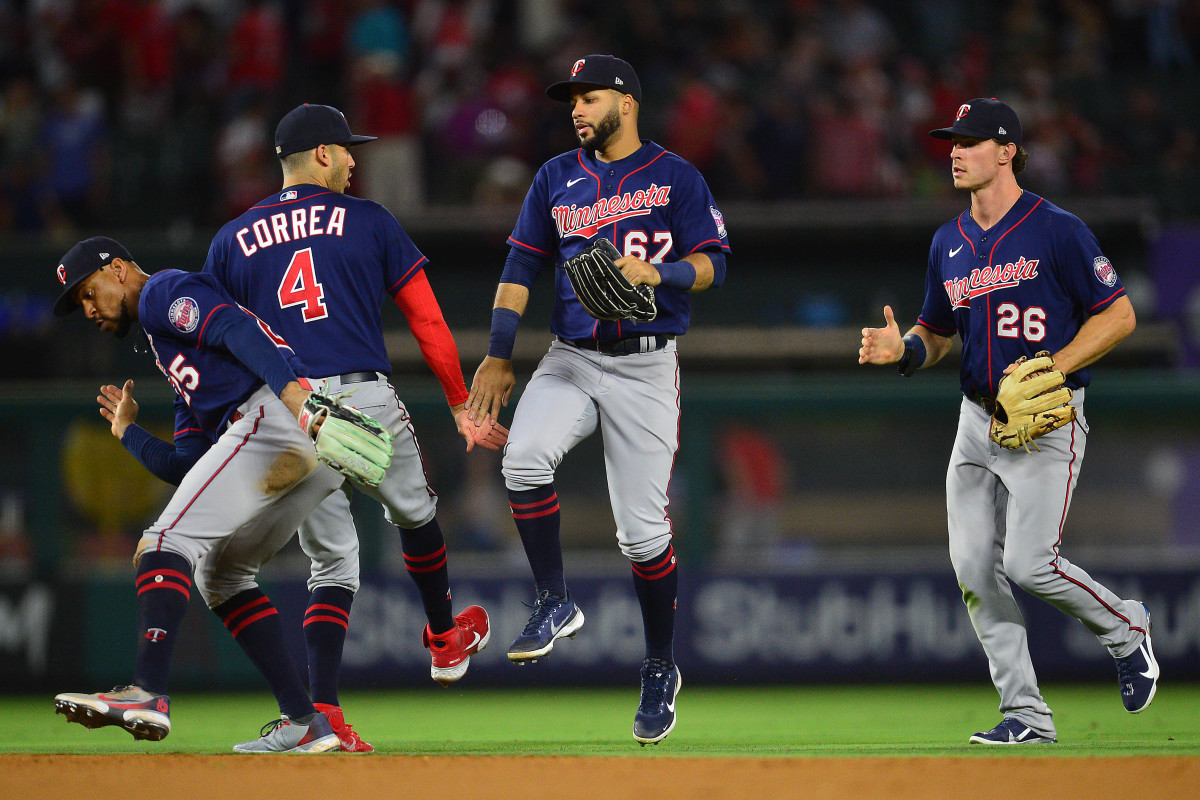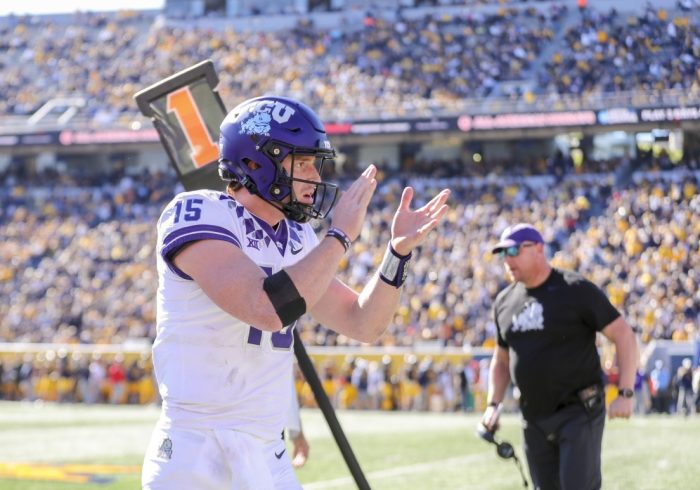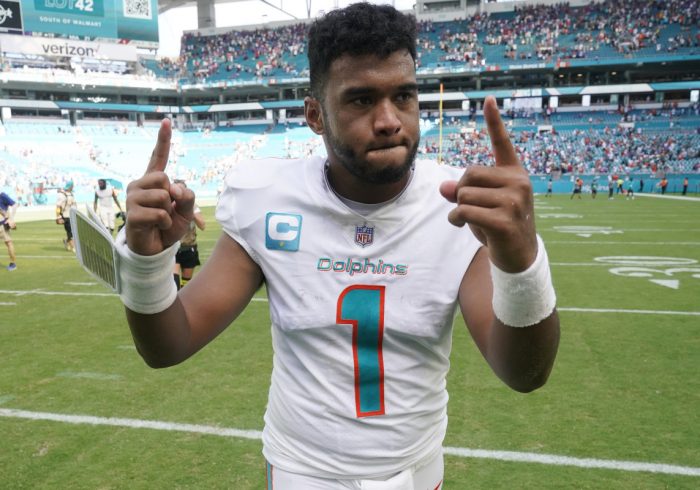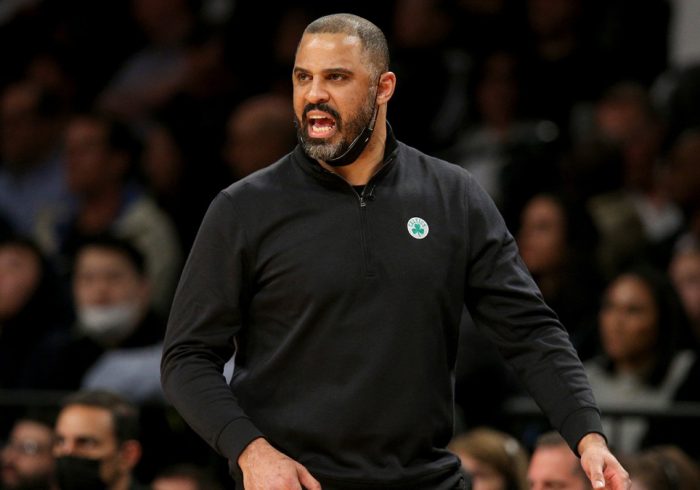Carlos Correa officially returned to the Twins on Wednesday, putting an end to one of the most bizarre free-agency sagas in baseball history.
By now, the 28-year-old shortstop’s journey has been well documented. He first agreed to sign with the Giants for 13 years and $350 million, a deal that fell apart after Correa failed a physical due to an injury to his lower right leg that was surgically repaired in 2014 (when he was still in the minors). The Mets swooped in hours later and reached a 12-year, $312 million agreement with Correa, only for their doctors to show concern over the same injury. Three weeks later, he was reintroduced at a press conference in Minnesota after signing a six-year, $200 million contract with built-in vesting and club options that could keep him in the Twin Cities for the next decade. His first foray into free agency last year earned him a three-year, $105.3 million deal with Minnesota, largely because the lockout interrupted the ’21–22 offseason and stunted his market.
The player the Twins wanted more than any other has fallen into their laps at a relatively affordable rate, for the second straight offseason. It’s not all that difficult to imagine a scenario in which they make the playoffs in 2023: Sure, considering the number of wild-card contenders in other American League divisions, Minnesota’s path to the postseason is probably limited to winning the AL Central, but it isn’t as far off as you’d expect a team that finished 78–84 to be.
Baseball Prospectus estimates the amount of value each team missed because of injuries in a given season, based on a player’s preseason projected WARP (BP’s version of WAR). Last season the Twins lost 9.6 WARP due to injuries, more than any other AL team. Projected WARP accounts for a player’s injury history, so the projected WARP for an injury-prone player, such as Twins center fielder Byron Buxton, is based on his projected number of games played, not a full 162-game season. For example, entering last season, Buxton was projected for 3.3 WARP over 127 games. He ended up playing in only 92 games, or 72.4% of his projected games played. So, his WARP missed was 0.91, meaning Minnesota’s injury woes were far more than just the often-injured center fielder. Give the 2022 Twins nine more wins, and suddenly they’re firmly in the wild-card race. If, say, some of those wins came against Cleveland, they could’ve made a run at the division. This isn’t meant to say that Minnesota should’ve been a playoff team, or that the Guardians shouldn’t have—the point is the Twins are much closer to contention now, upon Correa’s return, than they might appear.
The Twins finished third in the AL Central last season behind the White Sox and Guardians.
Gary A. Vasquez/USA TODAY Sports
Injuries, however, are part of the game, and Minnesota simply didn’t have the quality depth to cover for its starters when they got hurt last year. Fortunately for the Twins, there are still plenty of low-cost players available in free agency to improve the bottom of their lineup, the back of their rotation, their bench and their bullpen. Let’s take a look at some of their options.
First, they need to add a right-handed hitting outfielder/DH to face lefties in a platoon with Joey Gallo, who signed a one-year, $11 million deal earlier this offseason. The poster boy of the three true outcomes, Gallo is coming off his worst season yet, mainly because of how he distributed those outcomes. His strikeout and home run rates, 39.8% and 4.6%, respectively, were the worst of his career over a full season. His 13.7% walk rate was his second-lowest mark for a full season. The thing is, for as awful as Gallo performed in 2022, he was much better vs. righties: In fact, based on wRC+, the FanGraphs all-encompassing offensive metric, Gallo was exactly league average.
Gallo Splits 2022
| Slash Line | Strikeout Rate | Weighted Runs Created Plus | |
|---|---|---|---|
|
vs. LHP |
.110/.217/.219 |
48.2 K% |
29 wRC+ |
|
vs. RHP |
.173/.297/.394 |
37.6 K% |
100 wRC+ |
|
Overall |
.160/.280/.357 |
39.8 K% |
85 wRC+ |
Against lefties, Gallo was 71% worse than league average last season. He simply should never come to bat when a lefty is pitching. Against righties, he still is going to strike out a frustrating number of times, but at least he can hit for some power, run the bases well and play good defense.
The best player available to fill this platoon role is Andrew McCutchen, who is reportedly drawing interest from the Mets, Rays and Dodgers. The former MVP is no longer an everyday outfielder, but he is still a productive major league hitter (especially against lefthanders), and the Twins should go after him, too. Over the last four seasons, McCutchen has an .894 OPS vs. lefties, compared to a .698 mark vs. righties.
At this point in his career, McCutchen should come at an affordable price. Spotrac projects his market value to be one year, $7.6 million. Right now, the Twins have an estimated $162.7 million luxury tax payroll, according to Roster Resource. So even if—motivated after losing Correa—Steve Cohen and the Mets make a run at the veteran outfielder and drive his price up a bit, Minnesota still has plenty of space before bumping up against the first tax threshold. Though it won’t happen, it would be hilarious to see the Mets and Twins get into a bidding war over a 36-year-old who’s best suited to be a platoon corner outfielder and DH.
If the Twins miss out on McCutchen, they should go after former Braves outfielder Adam Duvall, who mashed against lefties (129 wRC+) despite struggles last season. Tommy Pham is also available. He’s coming off a down year (89 wRC+) in which he was traded from the Padres to the Red Sox, but he’s been fairly reliable throughout his career (116 wRC+), especially against lefties (132 wRC+).
Even if Minnesota signs McCutchen, it would still be smart to sign Pham, who, at his worst, is a quality fourth outfielder who could earn an everyday role if Gallo struggles or someone gets hurt. He could also platoon with DH Nick Gordon or right fielder Max Kepler, both left-handed batters who are much better vs. righties. Pham’s market value is two years, $16.7 million, according to Spotrac.
So, if the Twins get McCutchen and Pham at market value, their luxury tax payroll would increase to approximately $179 million, giving them $54 million left to spend on pitching. Their rotation—Sonny Gray, Joe Ryan, Tyler Mahle, Kenta Maeda and Bailey Ober—is solid, though they need one or two arms to account for the injuries that are bound to come at some point in the season. Maeda missed all of last year recovering from Tommy John surgery, while Ober and Gray each made multiple trips to the IL. Three starters to consider: Michael Wacha, Zack Greinke and Michael Pineda. The last of which could be the best fit of the trio; Pineda spent 86 days on the IL last year with the Tigers and struggled on the mound, but before then, he had three good seasons with the Twins, combining for a 22–13 record with a 3.80 ERA across 53 games.
Minnesota’s bullpen is also in fairly good shape, but like the rotation, it could use one or two more arms. Lefthanders Matt Moore and Andrew Chafin and righties David Phelps and Michael Fulmer would all make for good additions.
For the sake of this exercise, let’s say the Twins sign McCutchen, Pham, Pineda and Chafin. Here’s what their projected lineups would look like:
vs. LHP
- Luis Arraez, 1B
- Carlos Correa, SS
- Byron Buxton, CF
- Jose Miranda, CB
- Andrew McCutchen, DH
- Tommy Pham, LF
- Jorge Polanco, 2B
- Max Kepler, RF
- Christian Vázquez, C
vs. RHP
- Luis Arraez, 1B
- Carlos Correa, SS
- Byron Buxton, CF
- Jorge Polanco, 2B
- Max Kepler, RF
- Jose Miranda, 3B
- Joey Gallo, LF
- Christian Vázquez, C
- Nick Gordon, DH
Is this team a World Series contender? Probably not, but it looks like a roster that can make the postseason, so long as it stays relatively healthy.
The Twins have Correa, arguably the best shortstop in baseball, back in their lineup. Now it’s time for them to do more.



